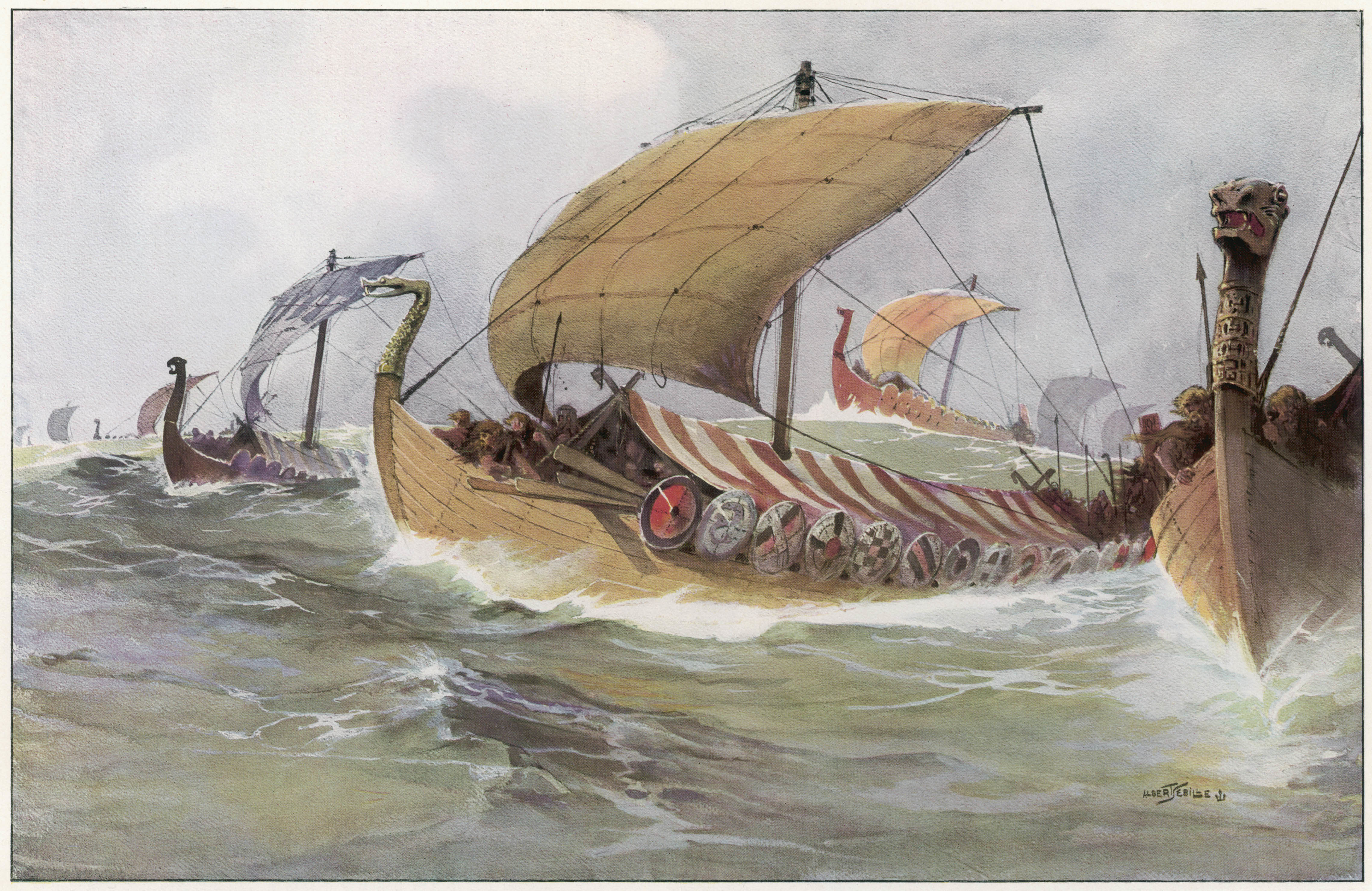
This series of posts has provided one method of estimating the time needed to construct a medium-sized Viking longship and outfit it for raiding.
Amount of wool
In addition to the time, there is the number of sheep needed to provide the amount of wool needed to make all the sails and clothes.
Author says medium-size sail would take .95 to 1.05 kilograms of wool per square meter. At about 80 m² for a medium-size sail, let’s round that up to 100 square meters, that would take about 100 kgs of wool. Author says the sheep raised at the time of the Viking age would produce anywhere from 1 up to 2.5 kg per year. Let’s assume 1.5. So that sail would require the annual production about 67 sheep.
Keep in mind that wool would have to come from sheep which were not needed to clothe and feed the rest of the family. In other words that would be the stock of sheep above subsistence level.
Separately the text says to make the shifts of clothing one person would need for a fishing season would take the wool from three sheep. For our crew of 32, that would require the annual output of 96 sheep to have the entire crew take along a few extra sets of clothes.
Final amount which will require a lot of guessing on my part is the sea-clothes. Author’s guess is it would take something in the range of eight or 12 times more hours to prepare 32 sets of sea-clothes as it would to prepare one sail. I’ll make another wild guess that the amount of wool would be proportionate to the amount of time. I’ll go with a multiplier at the the midpoint 8 and 12, so guess for multiplier of 10. My string of guesses result in a point estimate that the sea-clothes would require the annual output of something in the range of 670 sheep.
As a reasonableness test, that would mean the wool from 27 sheep would be needed for one set of sea-clothes and wool from 3 sheep for several sets of shifts. That is a ratio of 9:1, which seems a bit high but I guess is acceptable.
My recap of the number of sheep needed to be set aside just for the outfitting of the ship:
| sheep | |
| mainsail | 67 |
| spare sail | 67 |
| rope | ??? |
| 32 sets of sea-clothes | 670 |
| rugs, tent | ??? |
| extra clothes | 96 |
| —- | |
| subtotal | 900 |
That result is a point estimate. The range of uncertainty in my assumptions suggests there is a range of plus or minus 25% on the point estimate.
My string of guesses indicates that the annual output of more than 900 sheep would be dedicated to get a ship ready to go. Keep in mind this would be above and beyond the number of sheep needed to feed and clothe a family. That is a lot of sheep. That is a lot of wealth dedicated to wool production
If we spread that across the 30 farmsteads I have assumed earlier, that would be a whopping 30 sheep per farm above and beyond what is needed to otherwise take care of the family. That would be a staggering amount of wealth.
Don’t know where to go with the implications of that calculation of the excess sheep capacity needed. That is an excess inventory of sheep that would seem to be far beyond the capacity of a group of 30 homesteads.
However, I’ll keep the information here for my future reference and your entertainment.
I do hope you have enjoyed this series of posts.